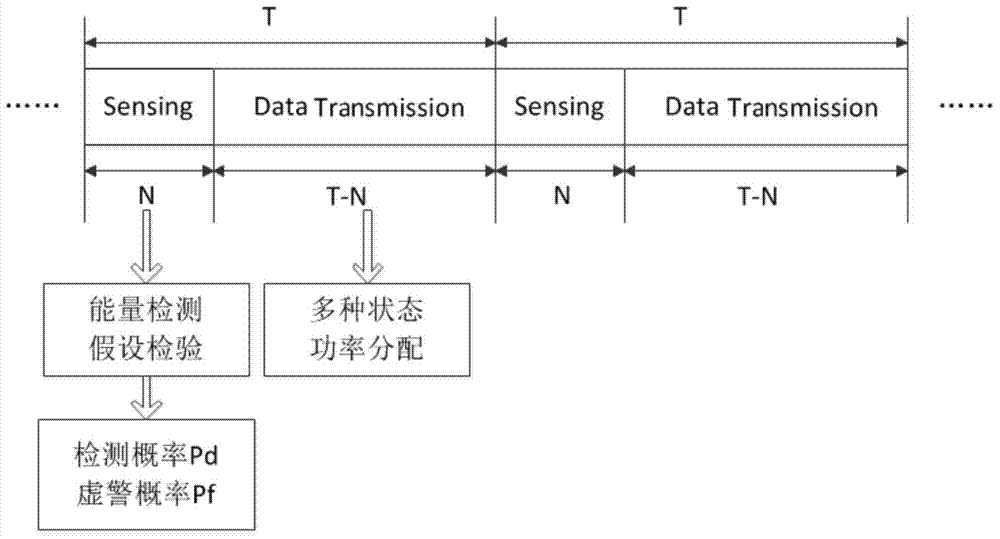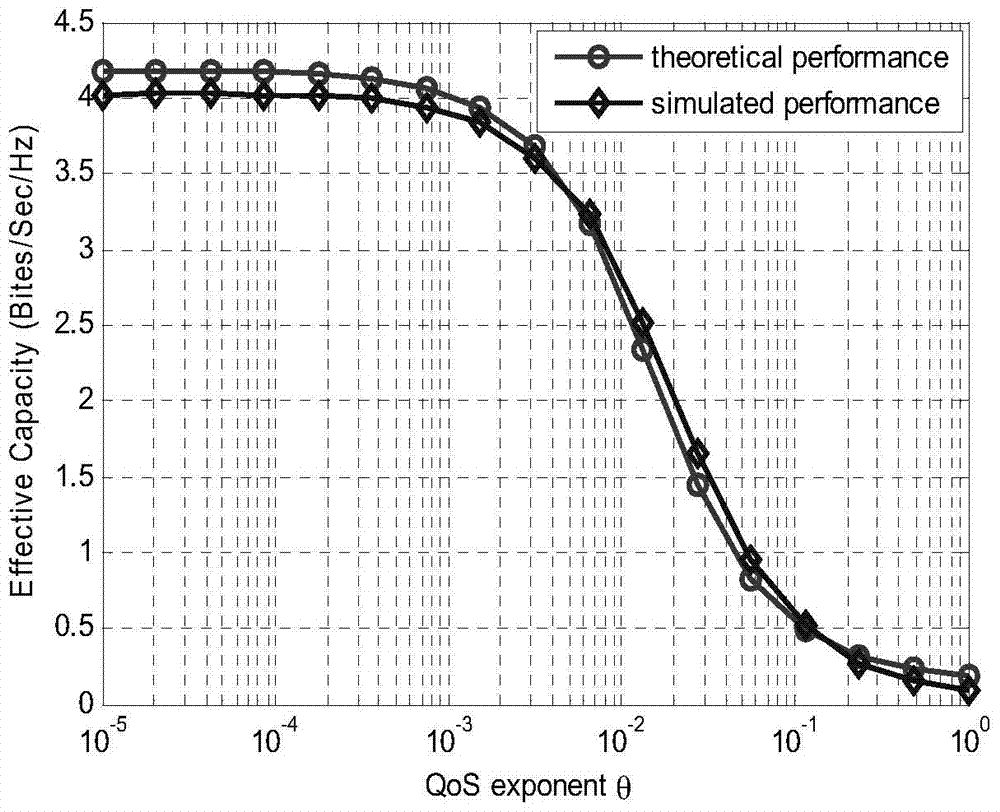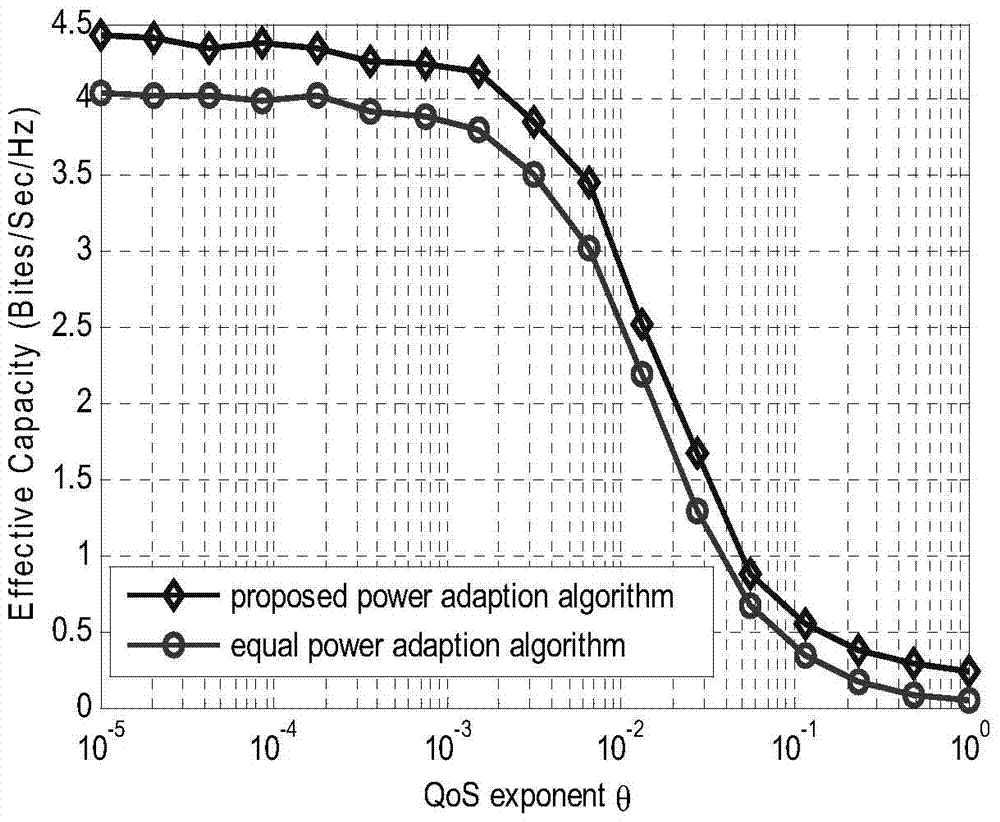A Resource Allocation Method Based on Effective Capacity in Cognitive Radio System
A cognitive radio and effective capacity technology, applied in the field of wireless communication, can solve the problems of not considering the delay QoS requirements, only considering very strict and very loose QoS requirements, etc., to achieve the effect of improving guarantee capability and performance
- Summary
- Abstract
- Description
- Claims
- Application Information
AI Technical Summary
Problems solved by technology
Method used
Image
Examples
Embodiment Construction
[0051] The present invention will be described in detail below in conjunction with the accompanying drawings and embodiments.
[0052] The optimized power allocation scheme based on effective capacity proposed by the present invention is as follows:
[0053] Consider a cognitive radio system, which contains a cognitive user, two sub-channels, sub-channel A and sub-channel B, and the channel model is Rayleigh fading channel and block fading. The frame structure of the cognitive radio system is as follows: figure 1 As shown, where T represents the duration of a frame, that is, the frame length, N represents the duration of channel sensing by cognitive users in each frame, and the first N long-term cognitive users in each frame perform channel sensing.
[0054] Step 1: The two sub-channels perform channel sensing independently without interfering with each other. The first N long-term cognitive users of each frame perform channel sensing to determine whether authorized users occ...
PUM
 Login to View More
Login to View More Abstract
Description
Claims
Application Information
 Login to View More
Login to View More - R&D
- Intellectual Property
- Life Sciences
- Materials
- Tech Scout
- Unparalleled Data Quality
- Higher Quality Content
- 60% Fewer Hallucinations
Browse by: Latest US Patents, China's latest patents, Technical Efficacy Thesaurus, Application Domain, Technology Topic, Popular Technical Reports.
© 2025 PatSnap. All rights reserved.Legal|Privacy policy|Modern Slavery Act Transparency Statement|Sitemap|About US| Contact US: help@patsnap.com



